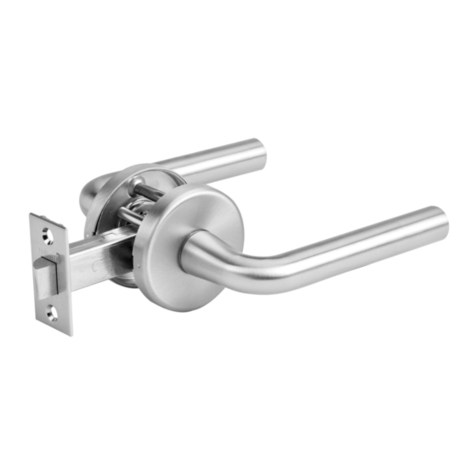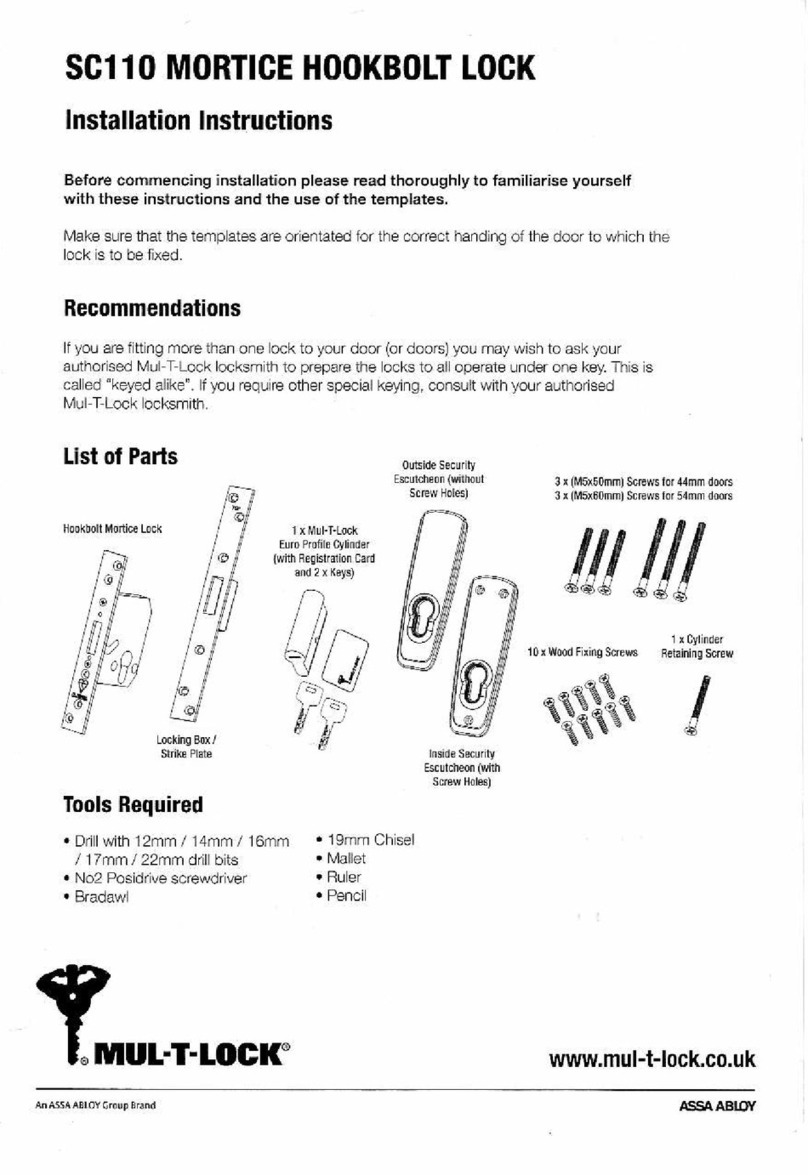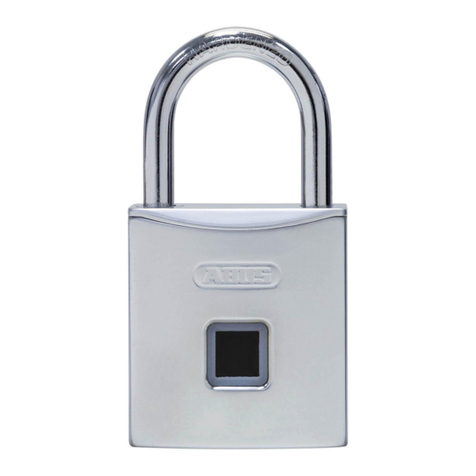Stuv SWINGLOX User manual

SWINGLOX
Installation Manual
V5
CLAVIS Deutschland GmbH
Schillerstraße 47-51
34117 Kassel
Telefon: +49 (0)561 988 499-0
E-Mail: [email protected]
Internet: www.tresore.eu
www.tresorschloss.de

- 10 -
ENGLISH
Application
Products are designed for highest demands and maximum reliability.
Application and installation recommendations and our comprehensive consulting
service provide support for the choice of our products.
High security locks of the 4.17.11 series are intended for use on doors of secure
storage units. Responsibility for verication and suitability for the respective
application resides with the user!
Changes to the products lead to the loss of the VdS* approval and any guarantee and
warranty claims.
*VdS: German independent testing institution
Content
Read rst
10 Application
11 Basics,
Technical Notes Lock
12 Technical Notes Keypad
Installation
13 Installation Procedure
Step 1
15 Installation Procedure
Step 2

- 11 -
ENGLISH
Lock installation
Basics:
The precise position and mounting of the locking mechanism play a major role in the correct functioning of
the lock. The locking mechanism must be aligned precisely in both horizontal and vertical position. The lock
can be mounted locking to the right, left, top or bottom, resting on the front or back.
Technical notes lock:
Bolt head dimensions
(mm)
Swing bolt 21,4 x 8 x 11,7 (Fig. 1)
Bolt stroke swings in completely
Mounting screws
lock
Cylinderhead screw DIN EN ISO 4762 - M6x30-8.8 or alternatively 3 cylinder-
head screws BSW 1/4 x 30 mm. The screw-in depth must comply with the valid
standards.
Cut out see Fig. 1
Tightening torque 6 Nm
Screw securing A screw securing must be provided by means of safety washers or liquid screw
locking devices. The screw-in depth must comply with the valid standards.
Bolt mechanism
connection
Ensure that the bolt head is not subjected to load in the closed position (for
example, tension in the opening direction). Under no circumstances should it
exceed 2,5 N. Otherwise the lock can not be unlocked.
Lock protection The safe must consist of a steel construction. It must be suitable to protect the
lock against tapping, e.g. by using manganese steel, or knocking off, e.g. sufci-
ently secured by supporting the lock case.
The safe must be constructively designed in such a way that there is no access
to safety-relevant parts of the lock for unauthorized persons with the door open.
Cable position In order to realize the cable connection between lock and tting, a hole in the
door of the safe is necessary. The max. permissible bore diameter is 11.5 mm.
If the lock may need to be mounted behind this hole, it must correspond to the
cable entry hole in the lock.
Lock resilience Adequate clearance of the bolt in locking operation must be ensured. No additio-
nal bars, brackets or similar accessories may be attached to the bolt. Transverse
forces or frictional forces on the lock must be avoided by design measures. The
blocking force in the opening direction is tested with 1 kN. Higher locking forces
must be absorbed by constructive solutions.
Function in combination
with another lock
If another lock is placed on the bolt mechanism, make sure that the swing bolt
lock is always locked rst. Check the correct sequence of locking of both locks.
Read rst

- 12 -
ENGLISH
Technical notes keypad:
Mounting screws
for the base plate
Self-tapping screw DIN 7500 Form C M4 x 25
(Cheese-head screws according to DIN 7985)
Cut out see Fig. 5
Tightening torque 2,7 Nm
Cable entry instead of a keyhole
Fig. 1
Read rst

- 13 -
ENGLISH
Installation procedure Step 1
If the connection cable from the lock to the keypad is guided through a hole into the interior of the safe, a
suitable drilling position, which corresponds to the VdS guidelines, must be dened.
In any case, it is important to ensure that the hole is located centrally in the area of the lock located behind
it, in the middle of the cable entry of the lock and always in the center of the base plate of the keypad.
Ensure that the connection cable is not squeezed during installation and the insulation is not damaged.
(Fig. 2)
Pull the connecting cable through the cable entry of the lock and insert the plug of the cable into the mat-
ching plug socket on the lock. (Fig. 3)
Then secure the lock to the bolt mechanism using three fastening screws. (Fig. 2)
Fig. 2
Fastening screws
Cable entry of lock
Door
Cable entry of base plate
Base plate for keypad housing
Installation

- 14 -
ENGLISH
Fig. 3
Cable entry of lock
Plug
Connection cable
A suitable strain relief for the connecting cable must be established between the plug connection of the
lock and the mounting plate of the keyboard. This may be, for example, a cable xer or something similar.
It is important that a sufciently long piece of the connection cable (min. 150 mm) protrudes from the bore
of the door, in order not to make the battery change unnecessarily difcult. (Fig. 4)
Cable length 150 mm
Fig. 4
Strain relief between lock and
mounting plate
Installation

- 15 -
ENGLISH
The keypad housing must be placed in the middle of the cable entry hole or the existing key hole.
Screw the mounting plate to the safe door. The base plate of the keypad must be securely screwed to
the safety door using two screws (self-tapping screw DIN 7500 Form C M4 x 25 Cheese-head screws
according to DIN 7985). The horizontal or vertical hole stencils can be used. (Fig. 5)
Care must be taken to ensure that the appropriate core hole diameters are inserted into the safe door
for the respective screws.
ATTENTION ! The display marks must be at the top! (Fig. 5)
Fig. 5
horizontal
vertical
Display marks
Installation procedure Step 2
01
Installation

- 16 -
ENGLISH
02 Connect the connection cable „Lock - Keypad“ to the keypad. (Fig. 6)
03 Connect a battery (9V block 6LR61) to the battery contact. (Fig. 6 and Fig. 7)
04 Insert the battery into the lower part of the keyboard housing. (Fig. 8)
05 Place the keypad housing on the base plate. In this case, the marking of the keypad
housing must be aligned with the display mark 1 of the base plate. (Fig. 9)
ATTENTION ! When installing the keypad housing, make sure that all cables are in the
housing and that no cable is pinched between the housing and the base plate.
06 When the housing is placed at on the base plate, turn the keypad housing clockwise until the
marking of the keypad housing is aligned with marking 2 of the base plate. (Fig. 10)
07 The system is now ready for use.
ATTENTION! Check the proper operation according to the user manual with the door open.
Fig. 6 Fig. 7
Plug connection
Connection cableBattery contact Battery (9V Block 6LR61)
Installation

- 17 -
ENGLISH
Fig. 8 Fig. 9
Cable in housing
Battery in housing Marking keypad housing
Mark 1 Mark 2
Fig. 10
Mark 2
Installation
ATTENTION: during assembly / disassembly of the keyboard housing make sure
there is a exact match between the marking of the housing and the indicator marks 1 or 2.

Steinbach & Vollmann
GmbH & Co. KG
Parkstraße 11
42579 Heiligenhaus
Germany
Telefon +49 2056 14-0
Telefax +49 2056 14-251
E-Mail info@stuv.de
Internet www.stuv.de
04/2019 Printed in Germany - 6.00.2017.3
Zumutbare Abweichungen in Modellen und Farben sowie Änderungen zur Anpassung an den neuesten Stand der Technik
und Produktion bleiben ausdrücklich vorbehalten.
Copyright © 2019 Steinbach & Vollmann
Dieses Handbuch darf weder als Ganzes noch in Auszügen ohne schriftliche Genehmigung von Steinbach & Vollmann
reproduziert, vertrieben, übersetzt oder in anderer Art und Weise oder mit anderen Mitteln elektronischer oder mechanischer
Art übertragen werden. Dies schließt Fotokopien, Aufzeichnungen oder Speichern in jedweder Art ein.
CLAVIS Deutschland GmbH
Schillerstraße 47-51
34117 Kassel
Telefon: +49 (0)561 988 499-0
E-Mail: [email protected]
Internet: www.tresore.eu
www.tresorschloss.de
Kundendienst
Other manuals for SWINGLOX
2
Table of contents
Other Stuv Lock manuals
Popular Lock manuals by other brands

SISO
SISO 14.60.290-0 user manual

Finger Crystal
Finger Crystal E202 user manual

Dormakaba
Dormakaba La Gard Reset Box user guide

Nationwide Industries
Nationwide Industries Keystone Advantage KLADV-P2 Installation, adjustment and maintenance instructions
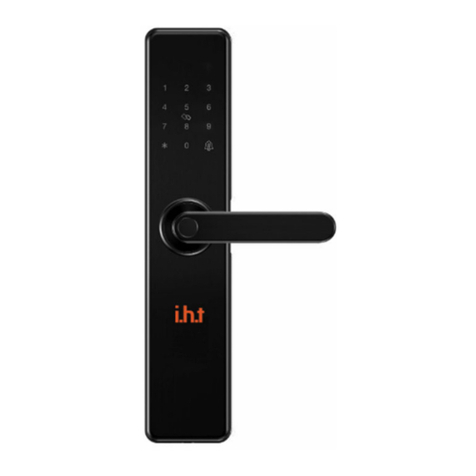
IHT Cordynamic
IHT Cordynamic IDL707 installation instructions
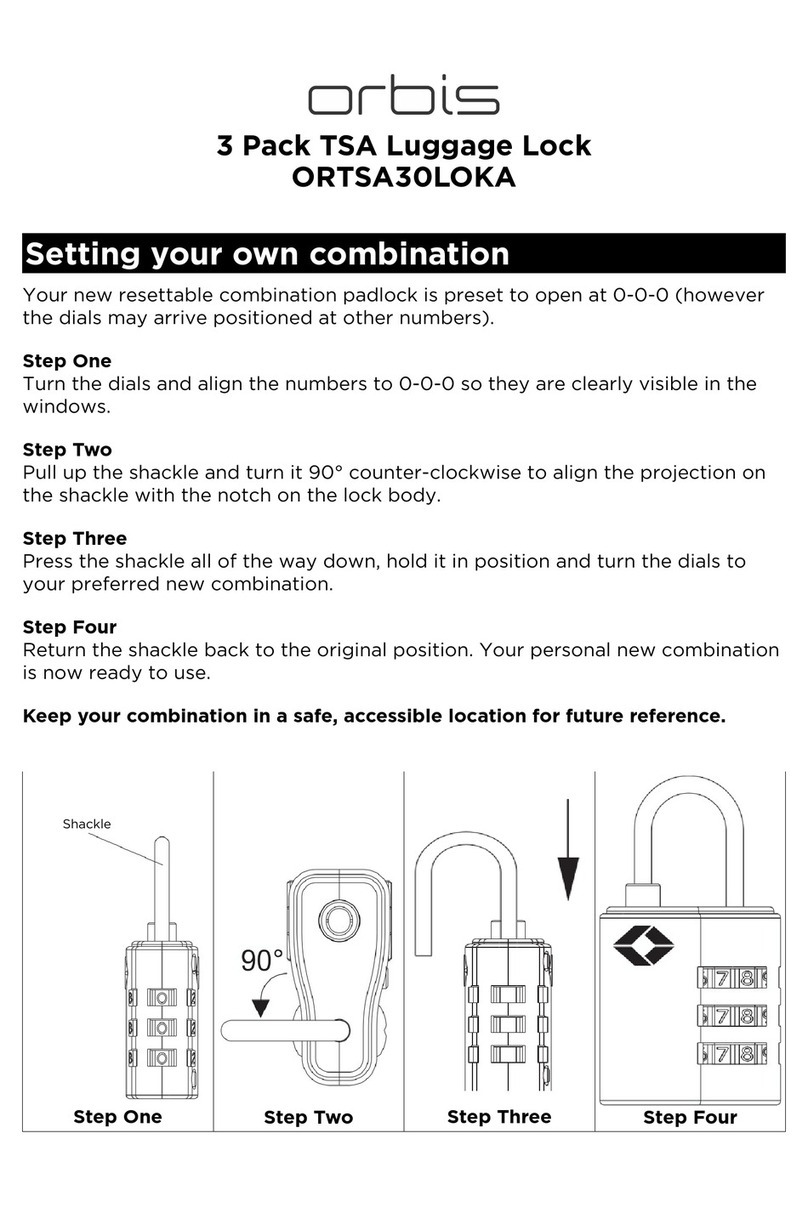
Orbis
Orbis ORTSA30LOKA user manual

Weiser
Weiser 62841/01 installation guide
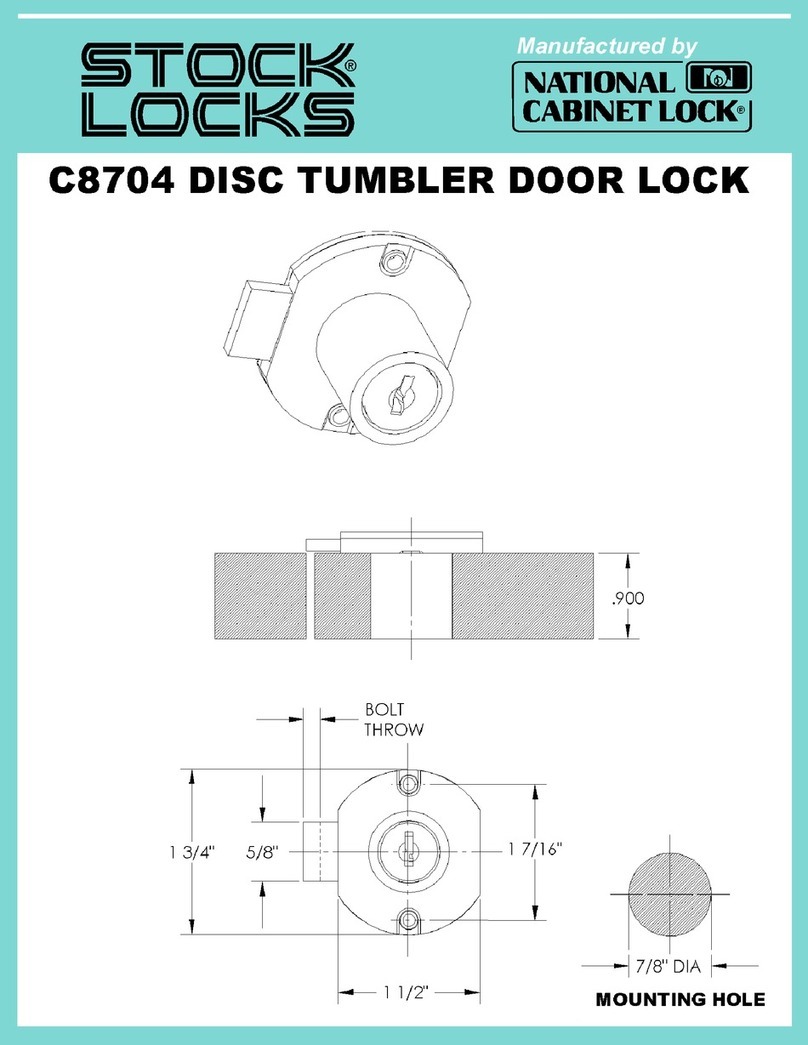
National Cabinet Lock
National Cabinet Lock C8704 Dimensional drawing
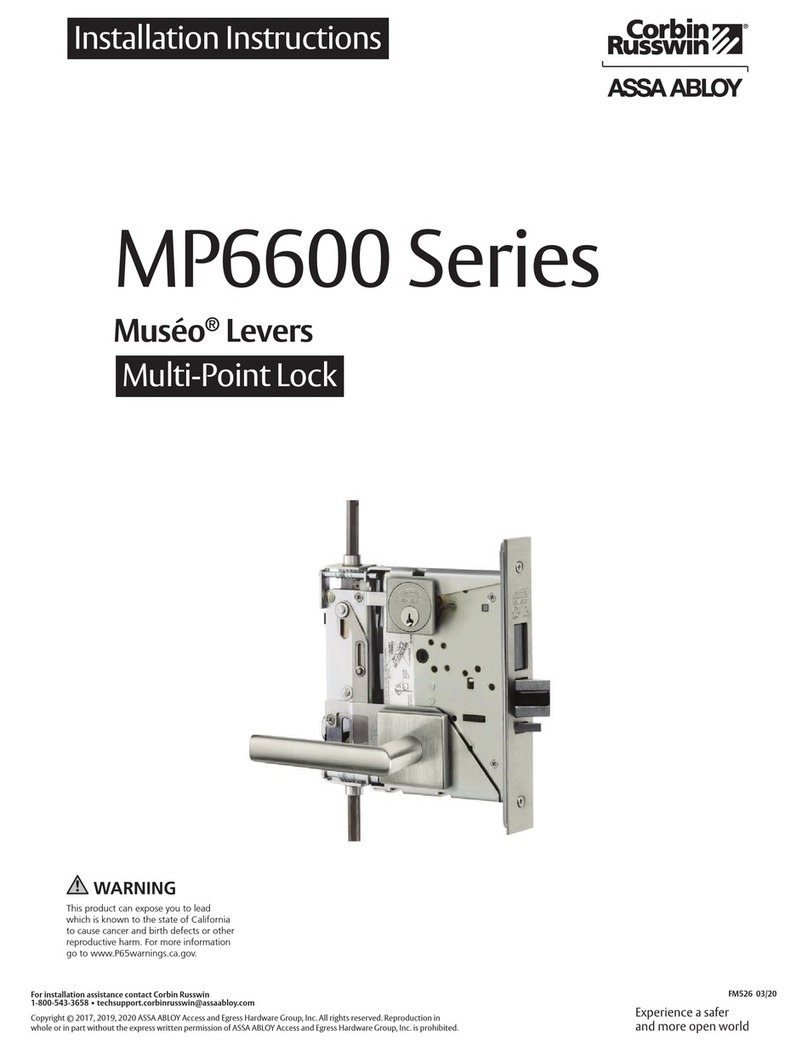
Corbin Russwin
Corbin Russwin ASSA ABLOY Museo MP6600 Series installation instructions
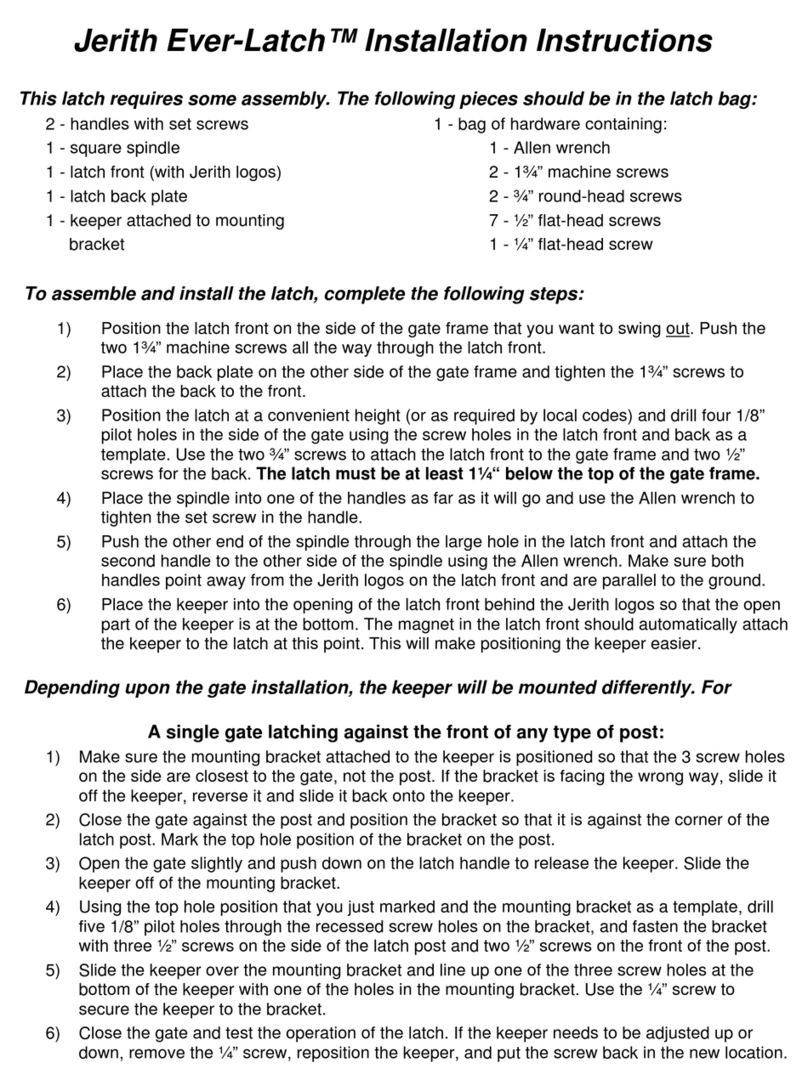
Jerith
Jerith Ever-Latch installation instructions
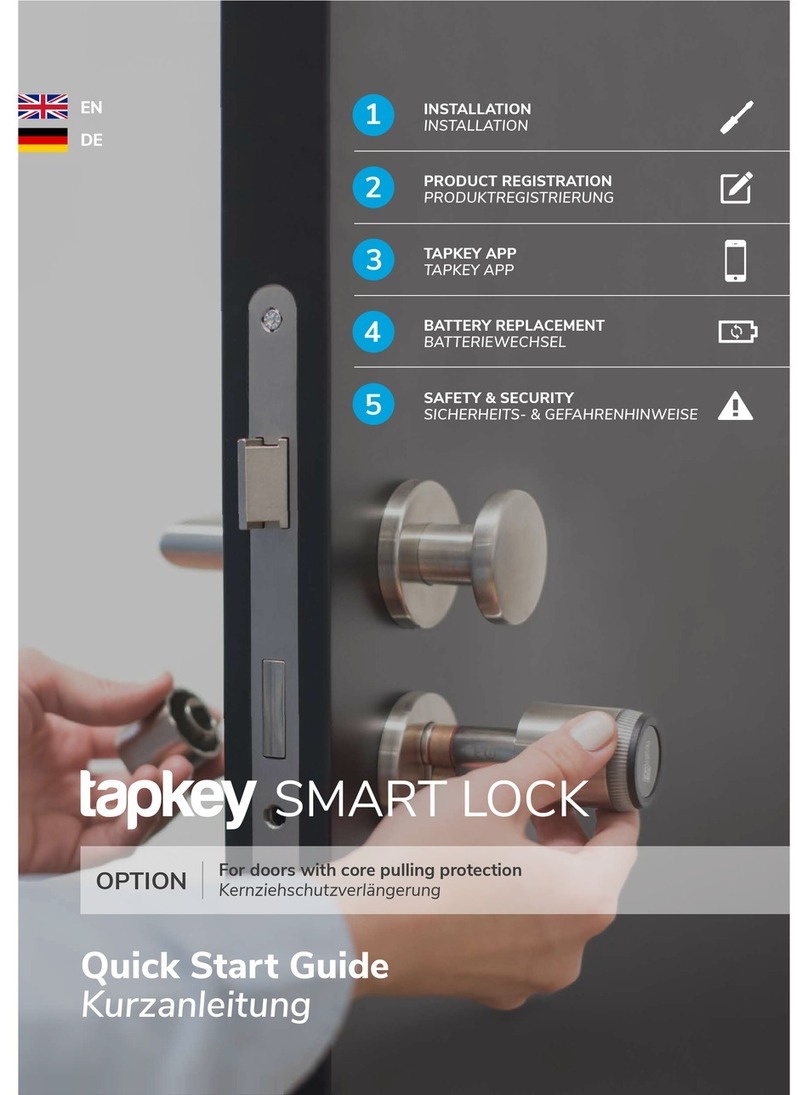
Tapkey
Tapkey Smart Lock quick start guide
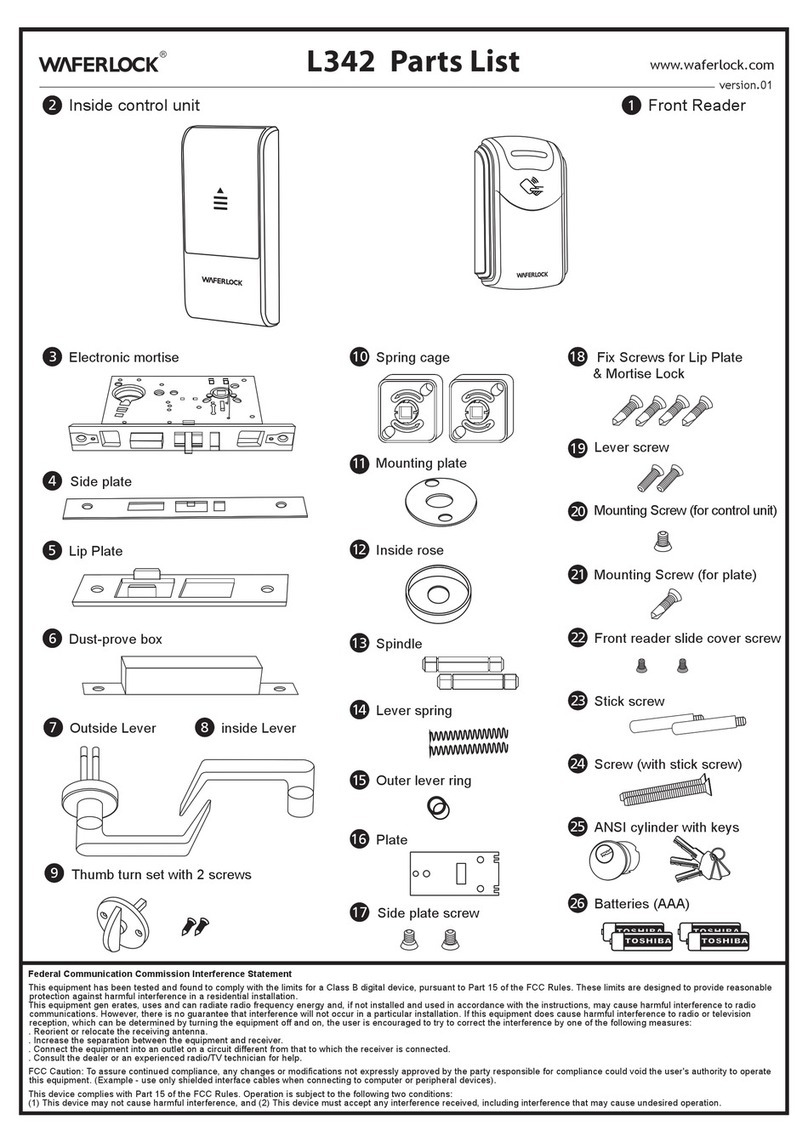
Waferlock
Waferlock L342 installation manual







